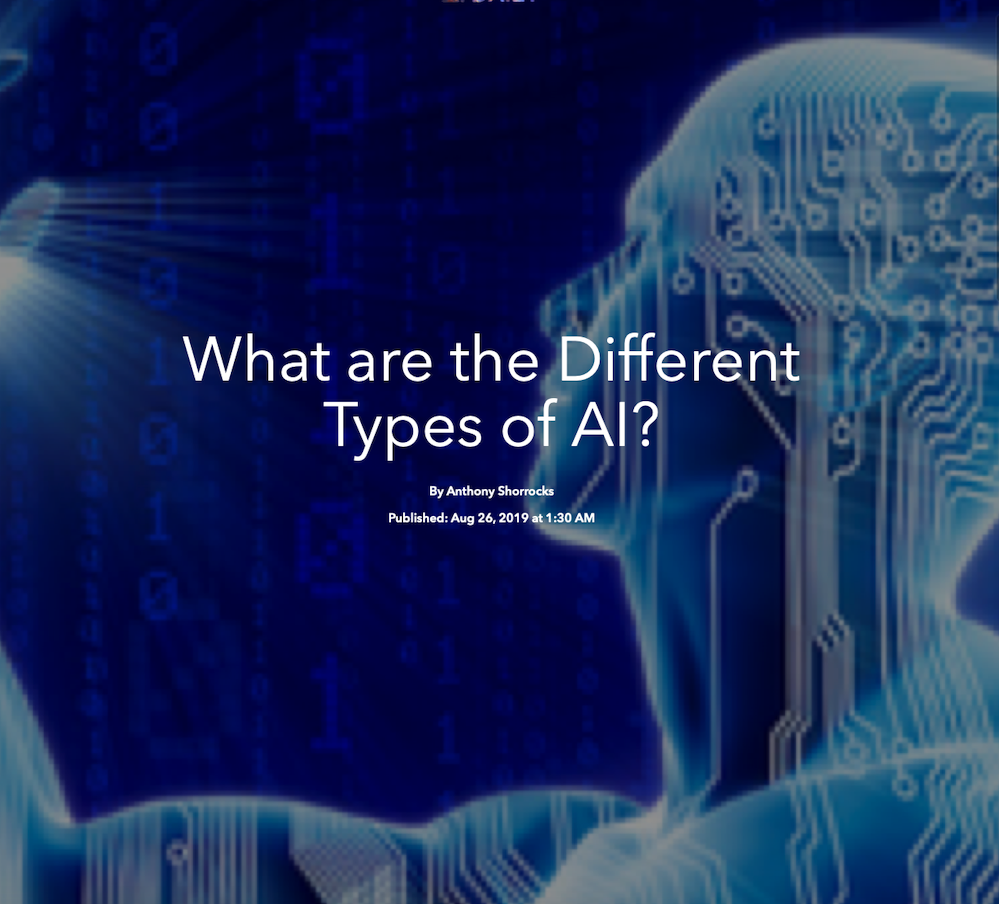
According to a survey of more than 3000 CIOs (Gartner), artificial intelligence is by far the most popular emerging technology, snatching first place from data and analytics. Indeed, it seems artificial intelligence will be the foundation of many different objects we will be using in the near future.
A robot is defined as a programmable entity that is designed to carry out a given series of tasks. When these robots are given human-like intelligence, behaviour, emotions and ethics by programmers, we say that they have “artificial intelligence”. This artificial intelligence is they divided into different categories based on what type of tasks they are able to carry out.
Firstly, to be able to understand artificial intelligence and its potential properly, one needs to know the basics. How artificial intelligence is categorised depends on the level of intelligence embedded into the robot. As of now, there are three clear types:
Artificial Narrow Intelligence (ANI)
Artificial Narrow Intelligence (ANI), also known as Narrow AI or Weak AI, is a category of artificial intelligence that is specialised in a single narrow task or job, and thus has a narrow range of capabilities. Today, this is the only type of artificial intelligence that is actually in existence.
People use ANI on a daily basis, perhaps without even realising. For example, Google Translate, Siri, and Alexa are all “machine intelligence” that use Natural Language Processing (NLP). NLP also has other uses, such as in so-called “chatbots”, as they can interact with humans in a natural, personal manner through understanding speech and text in natural language.
ANI systems are used today in medicine to diagnose diseases such as cancer with near-perfect accuracy through imitating human-like cognition and logical reasoning.
Artificial General Intelligence (AGI)
Artificial General Intelligence (AGI) refers to a category of artificial intelligence that is approximately as capable as a human being. However, it should be noted that AGI is still very much an emerging field of technology, and as the human brain is being used as the model, it seems extremely unlikely major breakthroughs will be made in the near future; we don’t even have a comprehensive knowledge of the human brain yet.
History shows humans have a habit of developing technology that eventually becomes dangerous to human existence. Thus, we shouldn’t assume replicating brain activity with algorithms will yield another outcome, and so we need to be prepared for the consequences that will come with this.
Artificial Super Intelligence (ASI)
Artificial Super Intelligence (ASI) is widely believed to only be possible in the far distant future. To get to this point, an artificial intelligence must surpass human ability at everything. Theoretically, this category of artificial intelligence would be able to perform very well in tasks such as art, decision making, and emotional relationships. These are things that many consider to be what differentiates humans from machines.
One could argue even humans haven’t yet perfected emotional relationships, or even good decision making. Could this suggest, in the future, ASI will perfect areas that humans couldn’t?
Article Thumbnail Credit: Harvard Science Review
